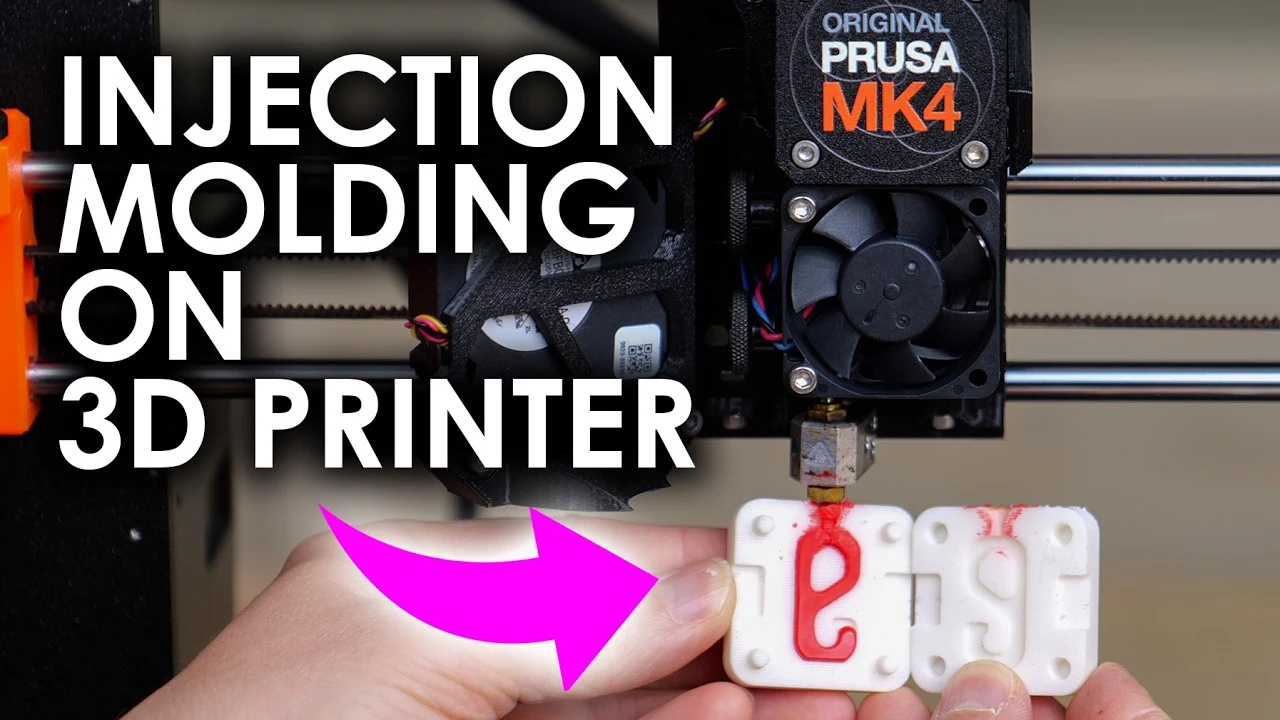If you’re interested in learning more about whether 3D printers can be used for injection molding. You might be interested in a series of tests carried out by the CNC Kitchen to explore the feasibility of using a 3D printers for injection molding. Covering the process, challenges, and potential solutions and creating injection molds using a resin 3D printer and inject plastic using the extruder of a 3D printer.
The ability to combine 3D printing technology with traditional injection molding processes could up a world of possibilities for low-volume production and rapid prototyping. This innovative approach combines the speed and flexibility of 3D printing with the precision and strength of injection molding, potentially transforming the way we manufacture small-scale and customized products. Saving creators and makers thousands of pounds by removing the need for expensive metal CNC cat injection molds.
Injection Molding using a 3D Printer
The primary motivation behind combining 3D printing with injection molding is to leverage the rapid prototyping capabilities of 3D printing while achieving the level of detail and strength associated with injection molding. This hybrid approach has the potential to significantly reduce the time and cost involved in traditional mold-making processes, making it an attractive option for businesses and inventors looking to bring their ideas to life quickly and efficiently.
- Rapid prototyping capabilities of 3D printing
- Achieving the detail and strength of injection molding
- Potential to cut down time and cost associated with traditional mold-making
Designing and Preparing the Mold
The first step in this process is to design a simple injection mold using software like Fusion 360. When designing the mold, it is crucial to consider factors such as mold size and part volume to ensure the success of the injection molding process. High-performance hotends and nozzles are essential components in enhancing the melting performance of the 3D printer, allowing for a smoother and more consistent flow of molten plastic into the mold. The design phase is critical, as it ensures that the mold can withstand the high injection pressure and heat required for the process.
Materials and Equipment
In this particular experiment, a Formlabs FORM4 resin printer and 10k resin were used to create the injection mold. Various filaments, including PLA, ASA, PETG, and TPU, were tested to understand their behavior under injection molding conditions. Each material possesses unique properties that influence the final outcome of the molded part, such as flexibility, strength, and heat resistance.
Here are a selection of other articles from our extensive library of content you may find of interest on the subject of 3D printing :
Overcoming Challenges
During the process of combining 3D printing with injection molding, several challenges emerge. One major issue is the difficulty in completely filling the mold due to the rapid cooling of molten plastic. This can result in incomplete or deformed parts, compromising the quality of the final product. Additionally, achieving adequate injection pressure and maintaining a proper seal between the nozzle and the mold pose significant problems. The limitations of 3D printer hotends in efficiently melting and injecting plastic also become apparent, as they are not designed for the high-pressure and high-temperature requirements of injection molding.
Implementing Solutions
To address these challenges, several solutions can be implemented. Pre-heating the mold is essential to improve the flow of plastic and ensure a more complete fill. This can be achieved by using a heat gun or a heated build platform. Switching to high-flow hotends and larger nozzle diameters can also help improve the melting and injection process, allowing for a more consistent and efficient flow of molten plastic. Using flexible materials like TPU for better mold filling and easier de-molding has proven to be an effective strategy in achieving successful results.
- Pre-heating the mold to improve plastic flow
- Using high-flow hotends and larger nozzle diameters
- Employing flexible TPU for better mold filling and de-molding
The experiment yielded mixed results, with successful creation of small parts using TPU, but challenges persisted when attempting to mold more complex shapes or using rigid materials like PLA. The potential for DIY injection molding for small, detailed, and flexible parts is evident, though further refinement is needed to achieve consistent results with larger or more intricate molds.
Future Directions
Looking ahead, there are several areas where improvements can be made to enhance the efficiency and quality of the 3D printer injection molding process. Higher injection pressure and better sealing techniques are necessary to ensure a more complete fill and reduce the occurrence of defects. Exploring different materials and hotend designs could also provide better results, as each material and hardware combination presents unique challenges and opportunities. The potential applications for small-scale and flexible part production are vast, ranging from custom jewelry to functional prototypes. Community feedback and ideas for improvement are encouraged to drive further advancements in this exciting field.
Conclusion
The integration of 3D printing and injection molding holds great promise for low-volume production and rapid prototyping. The use of high-flow hotends and pre-heating molds has proven to be crucial for the success of this process, allowing for better mold filling and more consistent results. While the method works well for small parts, it requires further refinement and experimentation to achieve reliable outcomes with larger or more complex molds. As the technology continues to evolve and the community contributes their knowledge and experiences, we can expect to see even more impressive applications of this innovative manufacturing approach in the future.
Video Image Credit: CNC Kitchen
Filed Under: Top News
Latest TechMehow Deals
Disclosure: Some of our articles include affiliate links. If you buy something through one of these links, TechMehow may earn an affiliate commission. Learn about our Disclosure Policy.
